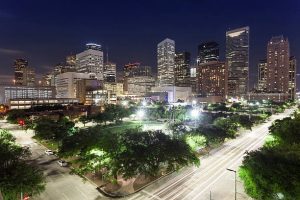When people think of Texas, they don’t immediately think of LGBTQ rights or even active communities. The large cities of that state, though, are fairly liberal and welcoming. Dallas/Fort Worth, Austin, San Antonio, and Houston have thriving gay and lesbian communities. Houston, in particular, is home to a large LGBTQ community and culture. The history of this community centers around the neighborhood of Montrose.
The Beginning of the Gayborhood

The neighborhood that is now Montrose began in 1911 as a new development. The neighborhood was a planned community, and it was designed so that residents could ride the Houston streetcar into the main part of the city for work. While the area was on the edge of the city at the time, its designer J. W. Link anticipated it would be just the first of one of these communities. It turns out he was correct, and today, Montrose is actually considered the Heart of Houston.
The Counterculture Movement
In the 1960s, the counterculture movement was in full swing in Montrose. With all of these artistic individuals moving into the neighborhood, it was inevitable that a number of LGBTQ people would make Montrose their home.
By the late 1970s, some gay bars had moved into the area, leaving the Downtown and Midtown areas. By 1985, Montrose had become the de facto gayborhood of Houston. At least 20% of all residents here identified as LGBTQ. Many gay and lesbian owned businesses found their way into this mostly residential zone.
Gentrification and Moving Outward
While Montrose was the center of LGBTQ life in Houston for several decades, the late 1990s saw the area become very gentrified. Housing prices hit the million dollar mark for a number of properties. What used to be a suburb for commuters was now a popular district for those looking to settle and raise a family. Gay and lesbian real estate professionals found that many no longer could afford to buy homes in Montrose.
Because of this, today’s LGBTQ individuals and families moving into Houston are looking elsewhere. Some have started to move into Houston Heights, although house prices there are also fairly high. Others are looking at some of Houston’s suburbs and outer areas. Thanks to increased acceptance, the idea of a central gayborhood in Houston has become something of the past. Residents don’t feel as if they have to live among others in the LGBTQ community.
While it may not be the most affordable housing in the city, Montrose does have some beautiful townhouses, bungalows, and cottages available. Take a look at what properties are on the market if you’re considering a move to Houston.
